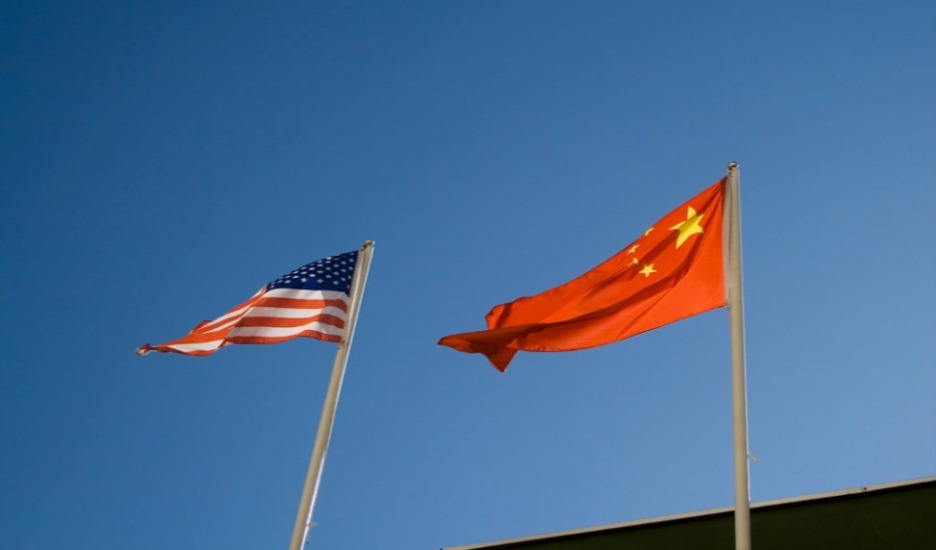Trump Administration’s Iran Strategy Overshadowed by Bellicose Rhetoric
Hostile Rhetoric Escalates Between Trump Administration and Iran
Published by The Lawfare Institute
in Cooperation With

Hostile Rhetoric Escalates Between Trump Administration and Iran
President Donald Trump issued an all-caps threat to Iran on Twitter late on Sunday night. “NEVER, EVER THREATEN THE UNITED STATES AGAIN OR YOU WILL SUFFER CONSEQUENCES THE LIKES OF WHICH FEW THROUGHOUT HISTORY HAVE EVER SUFFERED BEFORE,” Trump said in a message addressed to Iranian President Hassan Rouhani. “WE ARE NO LONGER A COUNTRY THAT WILL STAND FOR YOUR DEMENTED WORDS OF VIOLENCE & DEATH. BE CAUTIOUS!” Trump’s tweet came hours after a warning from Rouhani that the Trump administration’s policies were escalating toward conflict. “The U.S. administration is at war simultaneously with the world and its own national interests,” Rouhani said in a speech. “America should know peace with Iran is the mother of all peace,” but he also cautioned that “war with Iran is the mother of all wars.”
The bellicose rhetoric followed Secretary of State Mike Pompeo’s latest speech on the administration’s Iran policy, delivered on Sunday in California. In his remarks, Pompeo said that the United States would support political dissidents and reformers in Iran and described a “diplomatic and financial pressure campaign” targeting the regime. The campaign includes sanctions targeting senior regime officials and Iranian proxies and new, U.S. government-supported Farsi media broadcast on television, radio, and the internet.
Pompeo raised some strong examples of regime corruption and cited several recent examples of political protests in Iran, but he and the administration are imperfect ambassadors to the Iranian public. Pompeo’s remarks were halting and clearly unpracticed, and he repeatedly stumbled over the names of the activists and immigrants he praised. And despite its rhetoric, the Trump administration has not been a refuge for Iranian dissidents. The Iranian-Americans Pompeo cited in his speech came to the United States years ago; now, Iranians are subject to the administration’s travel ban and have even been blocked from applying for asylum. Just earlier this month, a California court ordered that the Department of Homeland Security reopen the asylum applications of almost 90 Iranian religious-minority applicants who were summarily denied protection in February after the U.S. government had previously invited them to Vienna to make their case; the denials left many stranded in Austria facing deportation back to Iran. As Jason Rezaian, the Washington Post reporter and now columnist who was imprisoned for more than a year in Iran, wrote after the speech, “Most of what Pompeo said about the depravity of Iran’s rulers was true, but when coupled with U.S. moves that directly hurt Iranians—specifically, stiff economic sanctions and the recently upheld travel ban—it is difficult for the administration to support its own claims that the well-being and prosperity of Iranians matter.”
The speech builds on Pompeo’s previous outline of U.S. policy toward Iran. In May, after the United States withdrew from the Joint Comprehensive Plan of Action (JCPOA), Pompeo issued a list of twelve demands, including that Iran discontinue its missile development program, end its support for proxy forces, and withdraw from its regional interventions. That speech set out a set of goals, but not much of a strategy to achieve them—other than the promise of sanctions that most experts warned would not be effective. This expands U.S. strategy, but still seems insufficient to coerce Iran to significantly revise its policies at home or abroad.
As Slate’s Josh Keating notes, Pompeo did not explicitly call for regime change, but the extent of U.S. demands leaves little question about the administration’s intent to see the government in Tehran ousted. Pompeo was accompanied on Sunday by Rep. Tom Cotton, who has been an outspoken advocate of regime change. National Security Advisor John Bolton has also pushed for a more militarized policy, and on Monday tried to take credit for the tone of Trump’s tweet. The hawkish policy has prompted concerns in Iran that the U.S. pressure campaign could be cover for a military intervention. “Although the current American government does not seem to speak of a military threat, according to precise information it has been trying to persuade the U.S. military to launch a military invasion,” Iran’s military chief of staff General Mohammad Baqeri recently told Iranian state media.
That does not seem to be a threat in the near term, but if the administration’s policy stagnates, both sides might see benefits to escalation. And a frustrating stalemate for both sides seems the most likely outcome of the current U.S. strategy. Despite U.S. efforts to convince other states to sign on to renewed sanctions, so far none has and several have restated their intent to continue purchasing Iranian oil exports—including China, a huge consumer, and South Korea, a close U.S. partner.
Israel Rejects Russian Offer for Syrian Buffer Zone
At the infamous Helsinki summit last week, President Trump and Russian President Vladimir Putin reaffirmed their intention to address Israeli security concerns in Syria. Putin, who had met with Israeli Prime Minister Benjamin Netanyahu in Moscow, stressed arrangements that “will bring peace to Golan Heights and bring a more peaceful relationship between Syria and Israel and also to provide security of the state of Israel.” But on Monday, with Assad regime forces making new advances near the Golan Heights, Israeli officials reportedly rejected a Russian offer to maintain a 100-kilometer buffer zone between the Israel-Syria Separation of Forces line established in 1974 and pro-regime Iranian proxies.
As discussed in last week’s Ticker, it is doubtful that Russia could deliver on its promise. Comparing the 100-kilometer line to the current deployment of Iranian-backed militias on Twitter, the Middle East Institute’s Charles Lister called the proposal “a truly wild fantasy.” Netanyahu had previously rejected a narrower 80-kilometer buffer zone, and told Russian Foreign Minister Sergei Lavrov yesterday, "We will not allow the Iranians to establish themselves even 100 kilometers from the border."
Israel has expanded its targeting of Iranian forces in Syria in recent months. In June, the Wall Street Journal reported last week, Israeli jets penetrated deep into Syria to strike Iranian-backed pro-regime militias on the Syria-Iraq border believed to be trafficking weapons in coordination with the Iranian Revolutionary Guard Corps. Israel has also continued to target Iranian operations at Tiyas airbase. Of particular concern is the deployment of medium-range Iranian missiles. Over the weekend, Israel fired two interceptors from the recently deployed David’s Sling system after detecting the launch of two Syrian SS-21 missiles near the Golan Heights; the interceptors were ordered to self destruct after it was determined that the Syrian missiles would strike within Syrian territory. Tensions are high and Israeli officials are concerned about missiles that could be launched from beyond Russia’s proposed buffer zone—even if Moscow could enforce it. And as David Kenner writes for The Atlantic, the threat of Iranian missiles has now spread to Israel’s border with Lebanon. Even without a consolidated land corridor across Syria, Iran has supplied Hezbollah with large stockpiles of new, more accurate weapons.
With the regime now consolidating control in Syria’s southwest after seizing Deraa, over the weekend Israeli soldiers facilitated the evacuation of more than 400 members of Syria Civil Defence, better known as the White Helmets, to Jordan. They are expected to stay there for the next couple months before being resettled in Canada, Germany, and Britain. “The lives of these people, who have saved lives, were now in danger. I therefore authorised their transfer via Israel to other countries as an important humanitarian gesture,” Netanyahu said in a statement on Sunday.
Turkey Lifts State of Emergency, but Preserves Key Powers
Turkish President Recep Tayyip Erdogan ended Turkey’s state of emergency last week, two years after it was imposed in response to a failed coup attempt. While it was in effect, Turkey purged more than 100,000 people from public-sector employment and arrested nearly 60,000 people for alleged involvement with the coup, with the Gulenist Movement that the government says was behind the plot, or with other opposition groups. Turkish authorities have seized or shuttered much of the country’s independent press, and Erdogan used the crisis to his advantage to pass sweeping constitutional reforms empowering the executive branch and then coast to re-election. The emergency law served its purpose; after a series of decrees consolidating his power, Erdogan now has little need for it.
Under the new rules Erdogan has set for himself, he will have closer control of the military, intelligence agencies, and the central bank, and will be able to appoint cabinet ministers at will. As the New York Times notes, he also amended the country’s counterterrorism law to preserve powers that otherwise would have been lifted with the expiration of the state of emergency. One of Erdogan’s first acts after his inauguration was to appoint his son-in-law, Berat Albayrak, as the new finance minister, roiling markets. Other moves to reorganize or dissolve ministries will affect the government’s capacity for months to come.


.jpg?sfvrsn=5a43131e_9)


